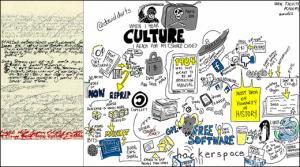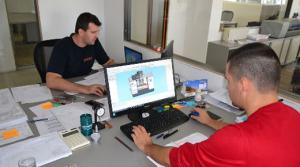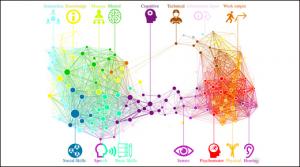All Features

Brad Egeland
First off, let me state that I really, really believe that remote project management is a great solution for most projects. It has worked extremely well for me for the past 10 years or so. But I know it’s not for everyone. Remote project management, while often a sensible and cost-effective…

Manfred Kets de Vries
A certain amount of stress is needed for us to function effectively. Stress is very much a part of the human condition. We all face disappointments, setbacks, losses and pain. But to live a rich and meaningful life, we must learn to deal in a constructive way with life’s challenges.
Stress evolved…

Harish Jose
I came across an interesting phrase recently. I was reading Kozo Saito’s paper, “Hitozukuri and Monozukuri,” and I saw the phrase “kufu eyes.” Kufu is a Japanese word that means “to seek a way out of a dilemma.” This is very well explained in Daisetz T. Suzuki’s wonderful book, Zen and Japanese…

Ruth P. Stevens
Lead generation is a major preoccupation of the typical B2B marketing department. Indeed, most B2B marketers report that leads—with an emphasis on quality leads—are their primary goal. So, let’s review the top prospecting tools and techniques that are working for B2B marketers today. And if you…
Bruce Hamilton
Bob C. was a frontline employee with 25 years of experience. His day was spent operating a machine that stripped and terminated leadwire assemblies. Problem was, there were more than 1,000 different assemblies, and it seemed that, while the machine was always busy, it was always behind schedule.…

Jim Benson
‘What if there’s a task in my options column that just never moves?”
This question comes up in almost every class we teach.
And we ask, “What if that happens?”
We get answers like, “You have to make time for it,” or, “We need to find out why we didn’t start it.”
Maybe. Maybe that was…

Mark Rosenthal
During a TED talk, Amy Edmondson, the Novartis Professor of Leadership and Management at Harvard Business School, talks about “How to turn a group of strangers into a team.” Although long-standing teams are able to perform, our workplaces today require ad-hoc collaboration between diverse groups.…

Michael Jarrett
Transformational leaders are the exception, not the rule.
A consistent picture emerges from lists of top CEOs. In Harvard Business Review’s Best-Performing CEOs ranking, Pablo Isla of Inditex, the parent company of Zara; Ajay Banga of Mastercard; and Bernard Arnault of LVMH stand out for both…

Laurel Thoennes @ QD
Does this sound familiar? The keynote speaker is talking a mile a minute as you scramble to take notes on her every word. Your hand cramps, and then it’s over. Speaker bows to a standing ovation while you sit perturbed, knowing you missed some things. But angst arrives as you look over your notes…

NIST
Organizations worldwide stand to lose an estimated $9 billion in 2018 to employees clicking on phishing emails. We hear about new phishing attacks regularly from the news and from our friends. So why do so many people still click? NIST research has uncovered one reason, and the findings could help…

Kevin Meyer
For the past several years, I’ve been fascinated by how we think—and how that affects us, our leadership, and the organizations we’re a part of. A couple years ago I wrote about the beginner’s mind and the various forms of bias, particularly confirmation bias. During the past couple months, I’ve…

Henry Zumbrun
Load cells are a combination of metal, strain gauges, glue, and more. Over time, fatigue ensures that there will be some instability in the system. Load cell stability or drift is usually assumed to be the amount of change in the entire cell system from one calibration cycle to the next. It is the…

Caroline Preston
Editor’s note: This story is part of Map to the Middle Class, a Hechinger Report series looking at the good middle-class jobs of the future and how schools are preparing young people for them.
The program had to be a scam. Why would anyone, she wondered, pay her to go to college?
Even after Sarat…

Guangnan Meng
Modern 3D laser confocal scanning microscopes can resolve fine surface topography detail as minute as a few nanometers, quickly and easily. It’s the solution that advanced manufacturing industries turn to for efficient quality assurance surface inspections.
The changing needs of surface and…

Mike Richman
‘Culture” is one of those business-speak words that’s used a lot, but for a good reason—having the right one is the key to unlocking your company’s quality potential. On the other hand, nothing will overcome a poor culture. Do you know which you have? We explored these issues during the Aug. 10,…

Brad Egeland
Project management office (PMO) directors. Are they game changers? Great leaders? Powerful enough to get the job done? Are they taken seriously by senior management? What about this: what about a central figure leading the project management infrastructure in an organization? It’s certainly not a…

Hélène Horent
Founded in 1947, in Veles, Macedonia, BRAKO produces parts and components used in medical devices, road sweeper trucks, airport ground equipment, forklift accessories, metal-welded constructions, small hydro plants, telecommunications shelters, and antenna towers.
The company also makes various…

Ryan E. Day
As manufacturing finds its way through the 21st century, there’s a groundswell change emerging. Organizations are jockeying for competitive position as they endeavor to describe this phenomenon. Industry 4.0, the fourth industrial revolution, and the industrial internet of things (IIoT) are a few…

Morgan Ryan Frank, Iyad Rahwan
How do workers move up the corporate ladder, and how can they maximize their career mobility? Increased wealth disparity, increased job polarization, and decreases in absolute income mobility (i.e., the fraction of children who earn more than their parents) all suggest that upward mobility is…

Chad Kymal
There is a proliferation of management system standards and requirements globally. These management system standards are either customer or industry mandated. Many standards are becoming a requirement for doing business.
For example, ISO 9001 is a quality management system (QMS) standard with…

Patrick Mork
Whether you work for a startup or a large company, there have never been so many metrics to help you understand how your business is doing. But I would argue that one metric rules them all: the net promoter score (NPS).
NPS represents the willingness of consumers to recommend your product to…

Ryan E. Day
‘In God we trust; all others bring data.” “Follow the data.” “Let the data talk.” Nice clichés, but there’s one problem... data can’t talk. In fact, data don’t say a darn thing. Data are bits of raw information. If you want to reduce product variation, improve your manufacturing processes, and…

Kaya Wiles
Your everyday permanent markers, glue sticks, and packing tape may offer a surprisingly low-tech solution to a long-standing nuisance in the manufacturing industry: Making soft and ductile, or so-called “gummy” metals easier to cut.
What makes inks and adhesives effective isn’t their chemical…

Ryan E. Day
Factory and industrial inspections are the backbones of robust quality assurance programs. Inspection is also an integral part of machine system installation and maintenance, as well as in-situ repairs and retrofits. This is why highly competent individuals who understand the metrology methods of…

Jeff Dewar
‘There’s nothing we can do about it.”
In a customer service situation, those words are equivalent to “buzz off” (or worse).
Here’s what customer service managers, from healthcare to telecommunications, from utilities to gyms, should have tattooed on the inside of their eyelids: Because employees…